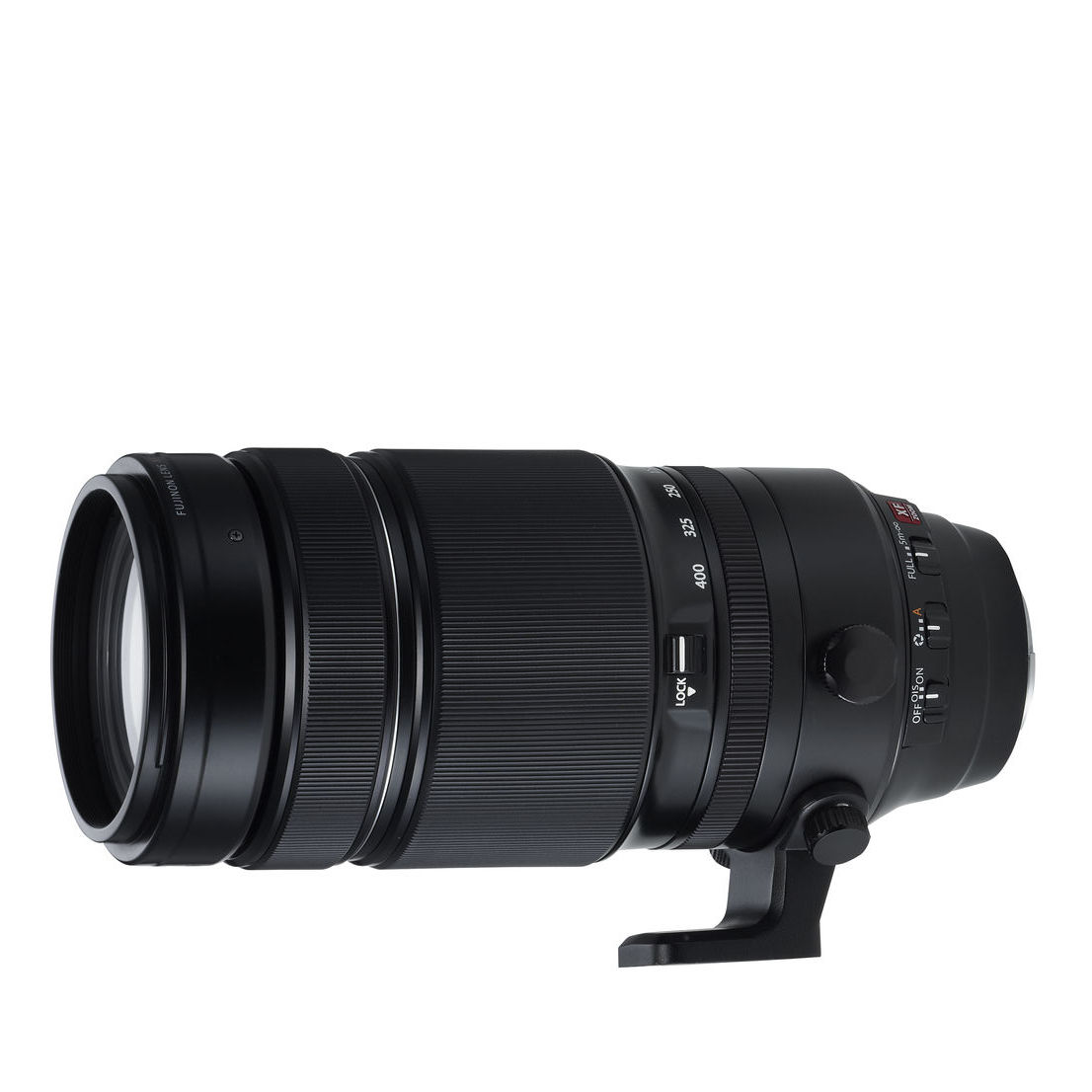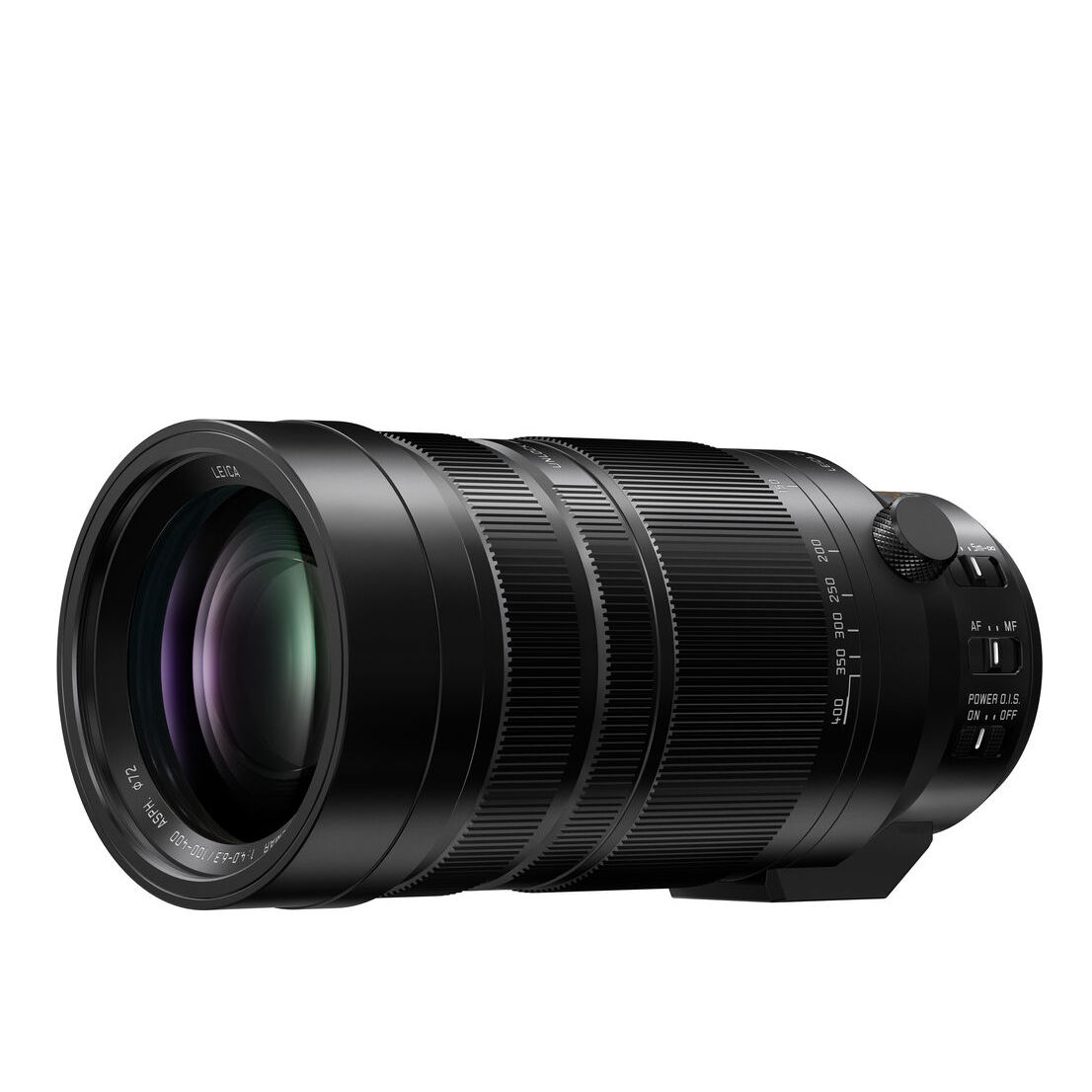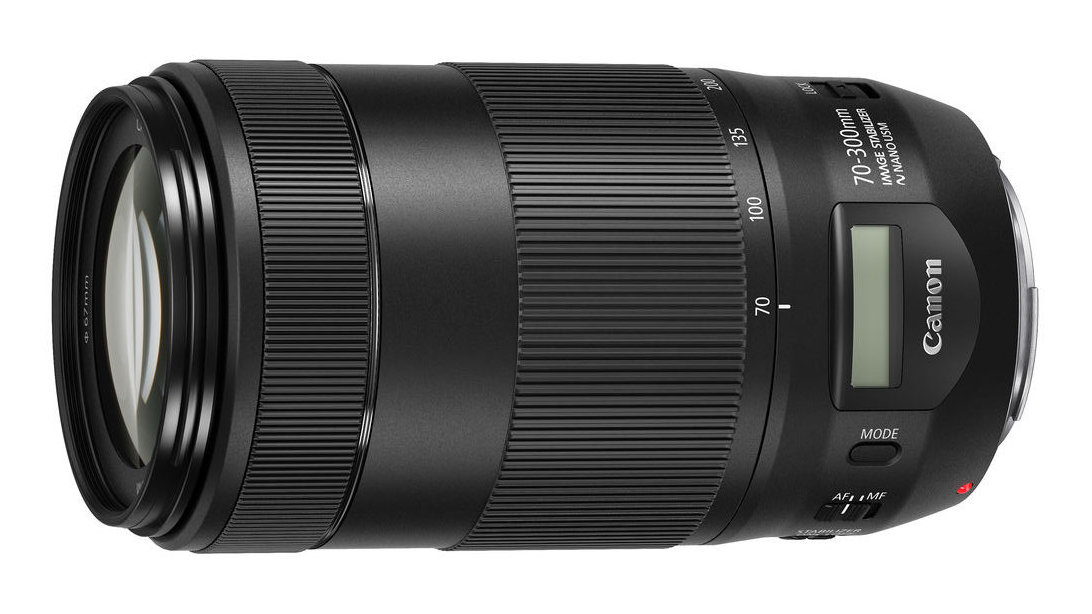The best telephoto lenses: top zooms for bringing your subjects closer
These are the best telephoto lenses for your camera, for Canon, Nikon, Fujifilm and more, both mirrorless and DSLR

If you're looking for the best telephoto lenses for your camera, look no further. I've drawn on experience of testing and reviewing lenses to bring you this indispensable guide to the most capable long lenses for all major camera systems, while keeping an eye firmly on the budget. I'm after the most bang per buck, so I've bypassed really exotic glassware that costs a fortune.
The long focal length of a telephoto lets you fill the frame with distant subjects, meaning its most common applications are wildlife and sports photography. However, telephotos have plenty of other uses, as a narrow perspective can be handy in all sorts of fields. They're great for portraiture, flattering subjects and separating them nicely from the background. They even have a place in landscapes and architecture, providing a very different perspective than the wide-angle lenses more commonly used in these scenarios.
If you want to know more about why you might choose a telephoto lens, scroll to the bottom of this article where I've put together a beginner's guide on the different types of telephoto and what they're used for. I've covered telephoto lenses for all mainstream systems, so I hope you find what you're looking for. Let's take a closer look

Matthew Richards is a photographer and journalist who has spent years using and reviewing all manner of photo gear. He is Digital Camera World's principal lens reviewer – and has tested telephoto lenses for every major camera system.
The Quick List

For Canon DSLR users, this telephoto zoom lens delivers generous reach and fast autofocusing, and is light enough to use with APS-C as well as full-frame cameras.

Lightweight and relatively affordable, this telephoto zoom in the popular 100-400mm configuration is a great addition to any Canon EOS R system kit bag.

With generous reach and superfast ultrasonic ring-type autofocus, this lens is a superb companion for Nikon DSLRs – it performed brilliantly in the lab and in the field.

While it's not one of the premium 'S-Line' lenses for Z-mount, this wide-ranging zoom still delivers brilliant reach and quality for wildlife and sports photography.

A premium lens with a 150-600mm ‘effective’ zoom range, this fine Fujifilm zoom boasts a premium optical construction that delivers superb image quality.

The MFT crop factor means this lens delivers an 'effective' 200-800mm range, which gives you serious reach, aided by effective optical Power OIS stabilization.
Load the next products ↴

A reworking of Sigma's popular 'light bazooka' telephoto zoom for DSLRs, this newer mirrorless edition is available in both Leica L and Sony E mount versions.

Best Pentax
For users of APS-C K-mount DSLRs, this lightweight and versatile telephoto zoom is the natural choice. It's well made with Pentax's customary weather-sealing.

Reasonably lightweight and portable, this workhorse 100-400mm lens for Sony E-mount boasts exotic handling characteristics and excellent all-round performance.
The best telephoto lenses
Why you can trust Digital Camera World
Best Canon EF
Specifications
Reasons to buy
Reasons to avoid
The Canon EF 70-300mm f/4-5.6 IS II USM has enhanced handling and performance compared to the Mark I version of the lens, featuring a redesigned optical path with UD elements and a modern exterior.
A key improvement is the Nano USM autofocus system, providing fast and silent operation, along with an electronically coupled manual focus ring. The lens also includes a digital information display for focus distance, focal length, and camera shake. The image stabilizer has been improved, offering 4-stop effectiveness and auto panning detection.
Lab tests confirm sharpness throughout the zoom range, minimal color fringing, and correctable distortion in Canon DSLRs. It is a compact and lightweight telephoto zoom, suitable for both full-frame and APS-C format DSLRs. It also works with EOS R-series mirrorless cameras via an adapter.
Read our full Canon EF 70-300mm f/4-5.6 IS II USM review
Best Canon RF
Specifications
Reasons to buy
Reasons to avoid
The Canon RF 100-400mm f/5.6-8 IS USM is a compact and affordable super-telephoto zoom lens. It has a compact and lightweight design for a 100-400mm lens, with an effective 5.5-stop optical image stabilizer. It is designed for EOS R-series full-frame bodies, making for a slimline and easily manageable overall package. The autofocus is super-fast, and the image quality is highly impressive in all respects. The lens construction includes 12 elements in 9 groups, a 9-blade aperture diaphragm, and a minimum focusing distance of 0.88m. It also features a customizable control ring and is compatible with Canon's RF 1.4x and 2x Extenders.
Aimed at sports, wildlife, and all-purpose shooters, the Nano USM autofocus system delivers rapid response and tracking, and the optical image stabilization ensures sharp handheld shooting. Center sharpness is impressive, though corner sharpness is less convincing. The lens barrel has a lock to prevent creeping at the 100mm mark, and there are switches for auto/manual focus and image stabilization.
In all, the Canon RF 100-400mm f/5.6-8 IS USM offers a great balance of performance, image quality, and affordability, making it a highly desirable telephoto lens.
Read our full Canon RF 100-400mm f/5.6-8 IS USM review
Best Nikon F
Specifications
Reasons to buy
Reasons to avoid
A 70-300mm lens is all very well, as is a 100-400mm lens, but the Nikon AF-S 80-400mm f/4.5-5.6G ED VR has an edge over both. It is a pro-grade super-telephoto zoom for full-frame Nikon DSLRs, with a construction of 20 elements in 12 groups, it features speedy ring-type ultrasonic autofocus and 4-stop Vibration Reduction (VR).
It has solid build quality, manageable weight, and delivers very good performance, with excellent center-sharpness throughout the zoom range, minimal color fringing, and very little distortion.
The lens is a significant improvement over its predecessor, which was something of a misfire, but a lot of those problems have now been corrected – the most glaring one being the original lens's dreadfully slow autofocus. However, it comes at a relatively high price.
Read our full Nikon AF-S 80-400mm f/4.5-5.6G ED VR review
Best Nikon Z
Specifications
Reasons to buy
Reasons to avoid
With a huge zoom range, the Nikon Z 180-600mm f/5.6-6.3 VR lens was the first affordable ultra-telephoto zoom for Z-system mirrorless cameras, delivering ultra-telephoto reach and a versatile zoom range. It is suitable for sports, wildlife, bird, and aviation photography, and is compatible with Nikon's Z-mount 1.4x and 2.0x teleconverters for extended reach. The lens incorporates an aspherical element and six ED elements to reduce distortion and enhance contrast and color accuracy. It also features optical image stabilization, providing up to 5.5 stops of shake reduction.
It has a sturdy, weather-sealed construction with internal zoom and focus mechanisms, is lightweight enough for handheld shooting, and includes customizable function buttons. It delivers superb sharpness, clarity, contrast, and color rendition throughout the zoom range. It's a top performer and offers very good value for money.
Read our full Nikon Z 180-600mm f/5.6-6.3 VR review
Best Fujifilm X
Specifications
Reasons to buy
Reasons to avoid
The Fujifilm Fujinon XF100-400mm f/4.5-5.6 R LM OIS WR is a super-telephoto zoom lens for Fujifilm X-mount mirrorless cameras, offering a full-frame equivalent reach of up to 609mm.
Designed for action, sports, and wildlife photography, it features rapid autofocus and 5-stop optical stabilization. The lens has a robust, weather-sealed construction, though it is fairly weighty at 1.4kg.
It incorporates an aperture control ring, zoom and focus rings, and dual linear stepping motors for fast autofocus. Its optical design includes five ED elements and a Super ED element for high image quality.
Lab tests showed some sharpness drop-off at the long end, but real-world shooting demonstrates impressive sharpness, exhibiting virtually no color fringing or distortion.
Read our full Fujinon XF100-400mm f/4.5-5.6 R LM OIS WR review
Best MFT

Specifications
Reasons to buy
Reasons to avoid
The Panasonic Leica DG Vario-Elmar 100-400mm f/4-6.3 Asph. Power O.I.S. lens is a relatively small and lightweight super-telephoto zoom lens designed for Micro Four Thirds cameras, delivering an effective zoom range of 200-800mm.
Designed in partnership with Leica, the lens has an impressive optical layout. It is compact and lightweight, making it suitable for handheld shooting, and has a quick, near-silent autofocus system. It also features 'Power O.I.S.' optical stabilization, which works in tandem with the sensor-shift system of camera bodies that feature in-body stabilization.
The lens is constructed to be dust- and moisture-resistant and is ideal for sports, action, and wildlife photography. It delivers impressive image quality, though sharpness is best when shooting wide-open and at shorter focal lengths.
Read our full Panasonic Leica DG Vario-Elmar 100-400mm review
Best L-mount
Specifications
Reasons to buy
Reasons to avoid
The Sigma 100-400mm f/5-6.3 DG DN OS lens is a revamped telephoto zoom for Leica L-mount, Sony E-mount, and Fujifilm X-mount mirrorless cameras, offering improved performance, handling, and image quality compared to its DSLR predecessor.
It is relatively compact and lightweight, weighing around 1,140g, and delivers a powerful telephoto zoom range. The lens features a fast and quiet stepping motor autofocus system, optical stabilization, and a customizable AF-Lock button. It incorporates high-quality glass elements to minimize color fringing and distortion.
The lens has a sturdy build quality, with a brass mounting plate and weather-sealing. It offers both twist-action and push-pull zoom adjustments. Lab tests demonstrate excellent sharpness and contrast across the zoom and aperture ranges. Overall, it provides a strong combination of performance and image quality at a competitive price.
Read our full Sigma 100-400mm f/5-6.3 DG DN OS | C review
Best Pentax K
Specifications
Reasons to buy
Reasons to avoid
The HD Pentax DA 55-300mm f/4.5-6.3 ED PLM WR RE lens is designed for Pentax APS-C format DSLRs, providing a powerful telephoto reach in a compact and lightweight design. Its retractable design shrinks it to 89mm in length and 442g in weight, making it particularly suitable for travel. It offers an effective zoom range of 82.5-450mm (full-frame equivalent). The lens has a very good build quality, complete with weather seals, and incorporates a stepping-motor system for quick and quiet autofocus.
It lacks optical image stabilization, relying on Pentax DSLR bodies' built-in sensor-shift stabilization. Image quality is generally very good, with impressive contrast and sharpness, though sharpness drops slightly at the long end. Lab tests confirm good sharpness, minimal color fringing, and well-controlled distortion.
Overall, it is good value for its price, offering a combination of telephoto reach, compact design, and solid performance.
Read our full Pentax 55-300mm f/4.5-6.3 DA PLM WR review
Best Sony E
Specifications
Reasons to buy
Reasons to avoid
The Sony FE 100-400mm f/4.5-5.6 G Master OSS lens is a super-telephoto zoom for Sony E-mount mirrorless cameras. It offers a superb combination of good sharpness and soft bokeh, despite its modest aperture rating.
The lens has a focal length range of 100-400mm and a variable aperture of f/4.5-5.6. It features 22 elements in 16 groups, including ED and Super ED elements to minimize chromatic aberrations and maximize sharpness. The lens also has Optical SteadyShot image stabilization, which can work in tandem with IBIS in later E-mount camera bodies.
Constructed with magnesium alloy components for durability and weather-sealing, the lens has customizable focus-hold buttons and an adjustable zoom torque ring. Autofocus is fast and quiet, and image quality is impressive, with minimal distortion and color fringing. It is compatible with 1.4x and 2x teleconverters. However, it is pricey to buy.
Read our full Sony FE 100-400mm f/4.5-5.6 G Master OSS review
Lab data and comparisons
The graphs below show the comparative performance of the lenses in this guide, based on our in-house lab tests. Winners for sharpness are the Nikon Z 180-600mm and Sony FE 100-400mm. There’s some pincushion distortion on show, when uncorrected in-camera, along with a little color fringing.
Scores for sharpness and color fringing are averaged from data taken across the entire image frame, from the center to the edges and corners, throughout the aperture range. For zoom lenses, the scores are also averaged from data measured at all marked focal lengths, and the same applies to distortion. Bear in mind that these average values don't fully reflect specific areas of performance. For example, a zoom lens might have noticeable barrel and pincushion distortion at its shortest and longest focal lengths respectively, which tends to average out when looking at the data overall. For more detailed graphs of each lens's performance, which give the full picture, check out the graphs in our full standalone lens reviews.
How to choose the best telephoto lens
If you're embarking on handheld telephoto shooting, image stabilization can be a huge help for getting consistently sharp shots. The optical stabilizers built into telephoto lenses often come with auto panning detection, or give you the option of manually switchable static and panning modes. The latter means that when panning horizontally, stabilization is only applied in the vertical plane.
If you're using a camera that features sensor-shift stabilization, optical stabilization is less important and many manufacturers will omit it in the design of lenses compatible with these cameras. However, some will allow the optical and in-camera stabilization systems to work in tandem, delivering even more stabilization than either system would on its own.
For full-frame cameras, the most budget-friendly telephoto lens is usually a 70-300mm telephoto zoom with a variable aperture rating, typically going from f/4 to f/5.6 throughout the zoom range. This type of lens can generally be squeezed into a very compact body, making them more portable than similar optics. See my budget telephoto zoom guide for a more in-depth comparison.
The next step up for full-frame cameras are 100-400mm (or thereabouts) super-telephoto lenses, which give extended reach, but are generally a little heavier, and often have slower variable apertures to prevent them from becoming too unwieldy. I have also a separate buying guide dedicated to 100-400mm lenses.
Ultra-telephoto zooms typically stretch from around 150-600mm, and are big, heavy lenses that require a tripod or monopod for any extended shooting session. Again, it you're after an ultra-telephoto, see my 150-600mm lens buying guide.
Should I get a full-frame or APS-C telephoto lens?
Lenses are designed to match the size of the camera's sensor, so they are either 'full-frame' or 'APS-C' lenses.
You can use full-frame telephoto zooms on APS-C format Canon, Nikon and Sony cameras. The 1.5x or 1.6x crop factor boosts the ‘effective’ telephoto zoom range giving you much more powerful reach. Another bonus is that you’ll only be using a relatively small, central area of the image circle produced by the lens, where image quality is at its best.
But you can also get lenses that are specifically designed for APS-C sensors. The advantage is that they are smaller, lighter and less expensive than full-frame lenses. However, you can't use these APS-C lenses on full frame cameras (not without using 'crop modes' which you will want to avoid).
A full-frame lens is ideal for both camera sizes, but getting an APS-C lens for an APS-C camera can save both weight and cash.
How we test lenses
We test lenses using both real world sample images and lab tests. Our lab tests are carried out scientifically in controlled conditions using the Imatest testing suite, which consists of custom charts and analysis software that measures resolution in line widths/picture height, a measurement widely used in lens and camera testing. We find the combination of lab and real-word testing works best, as each reveals different qualities and characteristics.
The best camera deals, reviews, product advice, and unmissable photography news, direct to your inbox!
Matthew Richards is a photographer and journalist who has spent years using and reviewing all manner of photo gear. He is Digital Camera World's principal lens reviewer – and has tested more primes and zooms than most people have had hot dinners!
His expertise with equipment doesn’t end there, though. He is also an encyclopedia when it comes to all manner of cameras, camera holsters and bags, flashguns, tripods and heads, printers, papers and inks, and just about anything imaging-related.
In an earlier life he was a broadcast engineer at the BBC, as well as a former editor of PC Guide.
- Adam WaringGuides Editor








